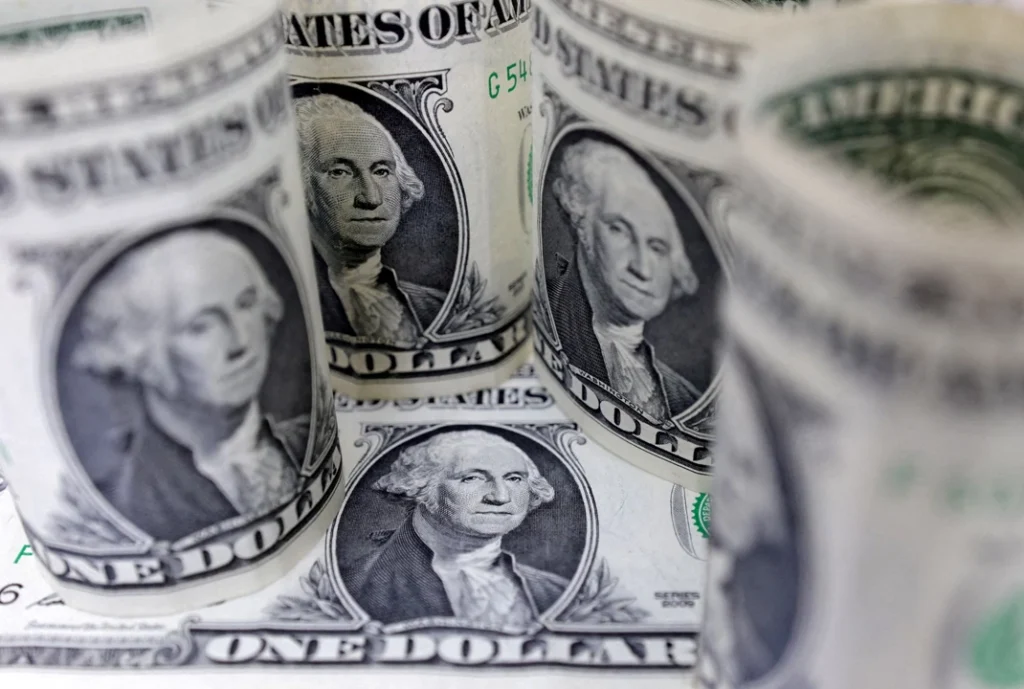- Web Desk
- 27 Minutes ago

Dollar set to finish week on upbeat note buoyed by safe-haven appeal
-

- Web Desk
- 4 Hours ago

NEW YORK: The dollar was set to log its biggest weekly rise in over a month on Friday, as uncertainties about a raging war in the Middle East and the repercussions it could have on the global economy fuelled an appetite for traditional safe havens.
The dollar index comparing the US currency against six others is poised for a 0.5 per cent climb this week. The conflict between Israel and Iran shows no signs of subsiding and market participants are nervous about potential US intervention in the region.
The two countries have been in a week-long air battle as Tel Aviv seeks to thwart Tehran’s nuclear ambitions and cripple the domestic government. The White House said US President Donald Trump will make a decision within the next two weeks about whether to join Israel in the war.
The resultant recent spike in oil prices added a new layer of inflation uncertainty for central banks across regions which have been grappling with the potential repercussions of US tariffs on their economies.
“Rising oil prices introduce inflation uncertainty at a time when growth is weakening,” said Charu Chanana, chief investment strategist at Saxo.
“That makes central banks’ jobs much harder – do they ease to support growth or hold back to avoid fueling inflation? Most seem to be prioritizing growth concerns for now, assuming that crude gains may not be sustained.”
In early Asia trading, the euro inched up 0.16 per cent to $1.151, while the dollar weakened against the yen by 0.17 per cent to 145.23 per dollar.
Also underpinning the yen’s gains was hotter-than-expected inflation data that kept expectations for upcoming interest rate hikes alive. Furthermore, minutes from the Bank of Japan’s policy meet this week showed policymakers agreed on the need to keep raising rates that are still at very low levels.
The Swiss franc was flat at 0.816 per dollar on Friday but was set for its largest weekly drop since mid-April after the country’s central bank lowered borrowing costs. Swiss rates now stand at 0 per cent.
Currencies positively correlated to risk sentiment such as the Australian and New Zealand dollars were steady, while sterling was little changed at $1.34.
Although the Federal Reserve earlier this week stuck with its forecast of two interest rate cuts this year, Chair Jerome Powell cautioned against giving that view too much weight. Analysts saw the central bank’s delivery as a ‘hawkish tilt’ further underpinning the greenback’s gains this week.
Investors were, however, taken aback by an unexpected 25 basis point interest rate cut by Norges bank and the krone is down by more than 1 per cent against the dollar this week.
Though geopolitical tensions were the main market focus this week, concerns about tariffs and the impact they may have on costs, corporate margins and overall growth are ever-present. These concerns have weighed on the dollar, which is down about 9 per cent this year.
Trump’s early July tariff deadline looms and sources said that European officials are increasingly resigned to a 10 per cent rate on “reciprocal” tariffs being the baseline in any trade deal between the US and the EU.
Elsewhere, the offshore yuan was little changed at 7.185 after China kept benchmark lending rates unchanged as expected.
Also read: Pakistan stocks early gains washed out amid Middle East conflict jitters





